Collecta has been bringing out prehistoric animal tubes over the last few years, and while some gave us some great new designs, others have just given us miniature versions of models they already have. This is a case of the latter, as they have released these small versions of their ancient mammals. And two odd balls. Each is based on an older figure, but with the stance inverted.

Let’s begin. With twelve figures, gonna try to get through each of these quick. Starting with the a’s with Andrewsarchus. We have a great representation of the larger figure, though losses some of the details due to miniaturisation, like the eyes and jaws. At 2.5” long and 1.2” high, it could make for a decent juvenile.
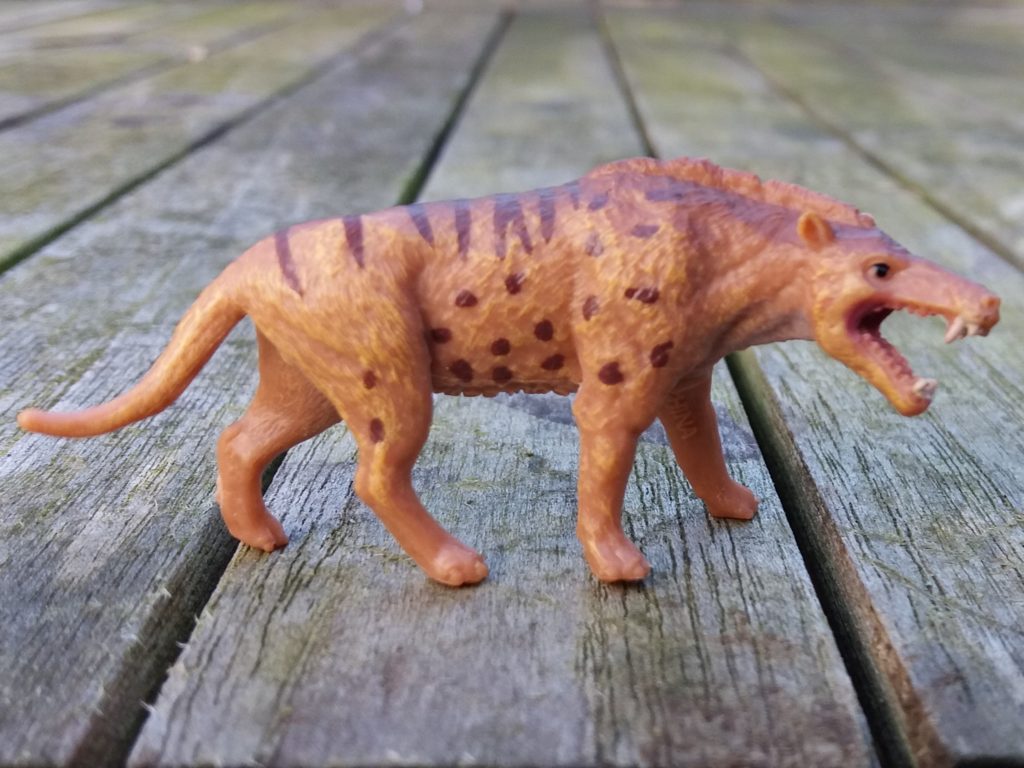
Next, Arsinoitherium. Again, this isn’t as detailed as it’s larger counterpart, but still works as a juvenile, and it still comes out as a well detailed figure. The face is actually quite cute. It’s 2.8” long and 1.2” high (again), so it would work well as a mother and child set… if Collecta prehistoric mammals weren’t mostly male.
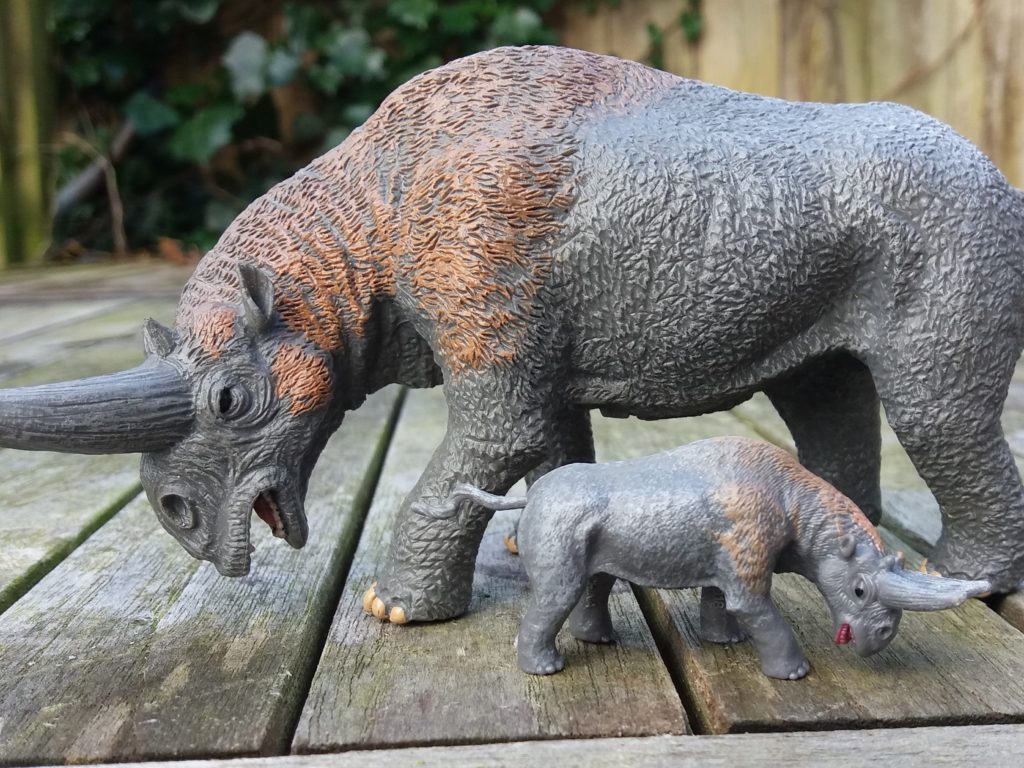
Here comes Daeodon! This feels quite a bit different from the full-sized model, owing to the less detailed fur and a more uniform colour pattern. It is 2.5” long and 1.4” high. Not bad.
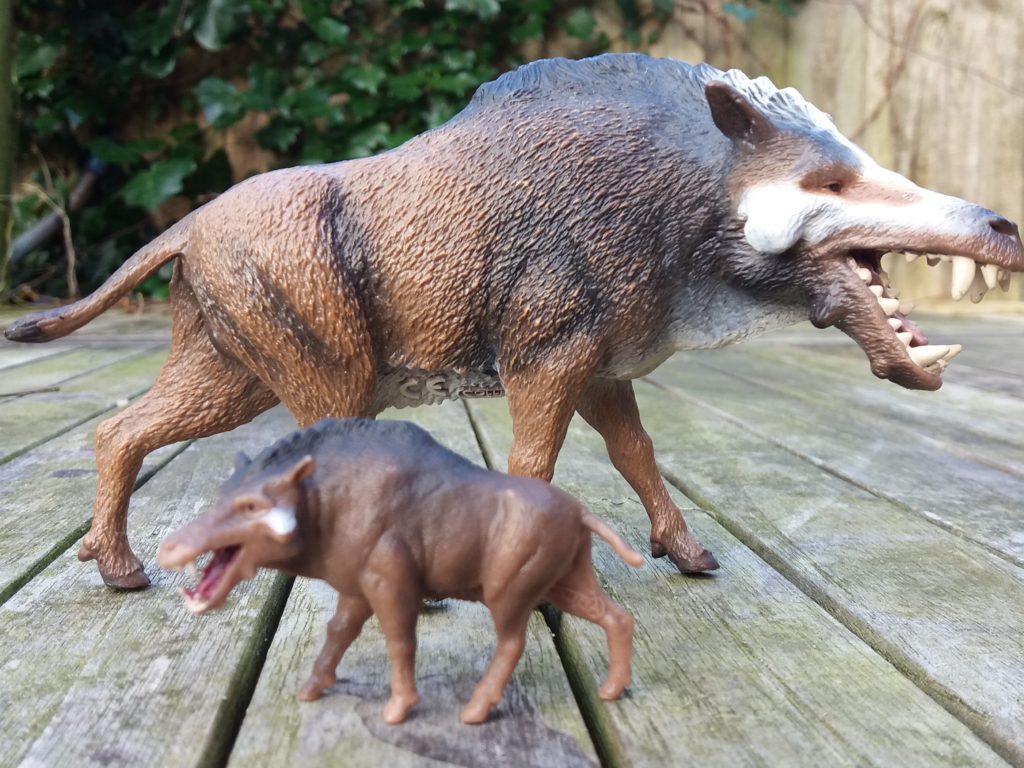
Now for some of the giants that have been shrunken for the set. Deinotherium is 2.9” long and 1.5” high (again!), making it the longest member of this miniature set. This genuinely feels like it is a juvenile, as the tusks have been shortened by quite some way. Quite the catch from this tube.

The mammoth, however, is definitely just a small version of an adult figure. With the length of those tusks, there is no using this as a juvenile. It feels heavier, given this is one of the larger of the figures in general, being 2” long and 1.6” high. Not a bad figure, works well enough.
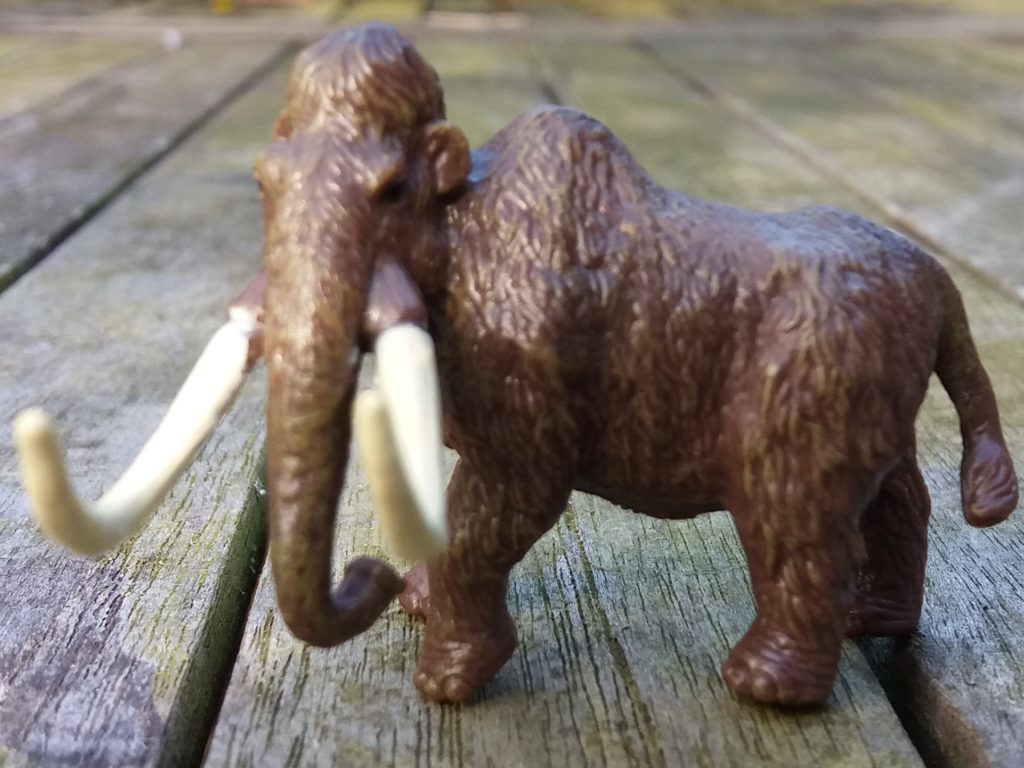
Next, Megacerops. The fur, again, feels underwhelming compared to others, under textured due to small size (I fear this phrase may be repetitive). Despite being a smaller figure though, they haven’t changed it being… how to safely put this? Less….. male than the main figure. It is 2.5” long and 1.2” high. Now, let’s swiftly move on!
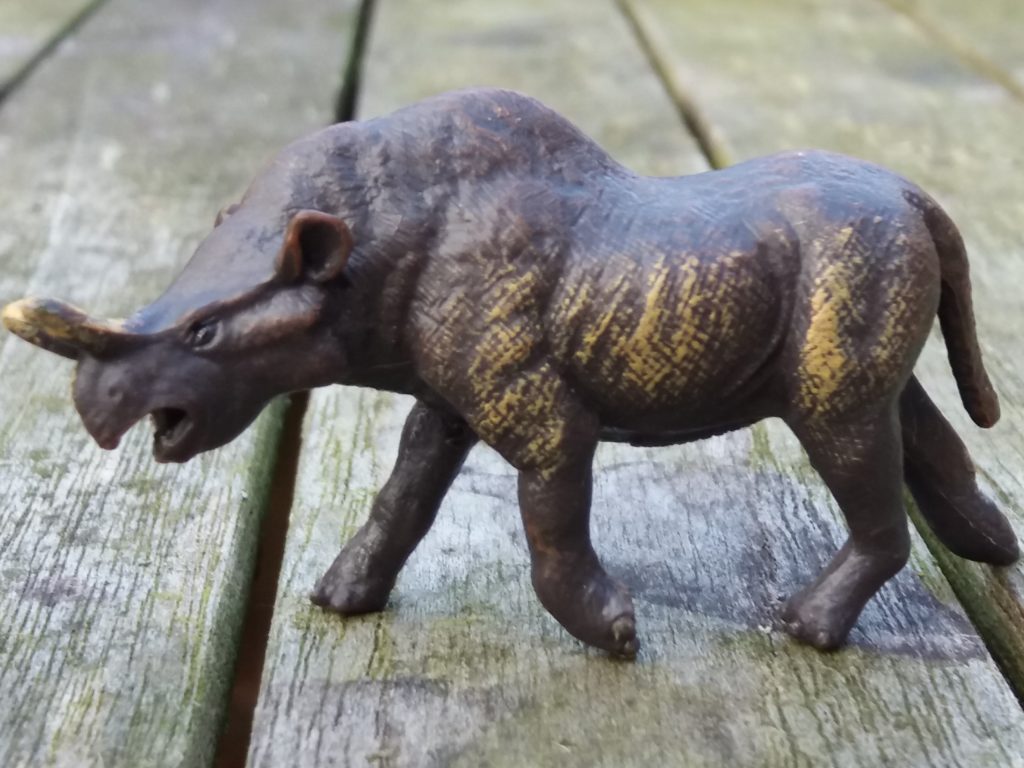
Moropus is next, and it feels like another great choice for a juvenile of the species, as the nails and head are so much shorter to be near paedomorphic. This figure is 1.8” long and high, so works well with other miniatures.

While the face of Paraceratherium could be seen as paedomorphic, the rest is too obviously an adult model. Pity, it would have been great to have a parent/ child set. At 1.9” high and 2.3” long, it’s a decent size all round.
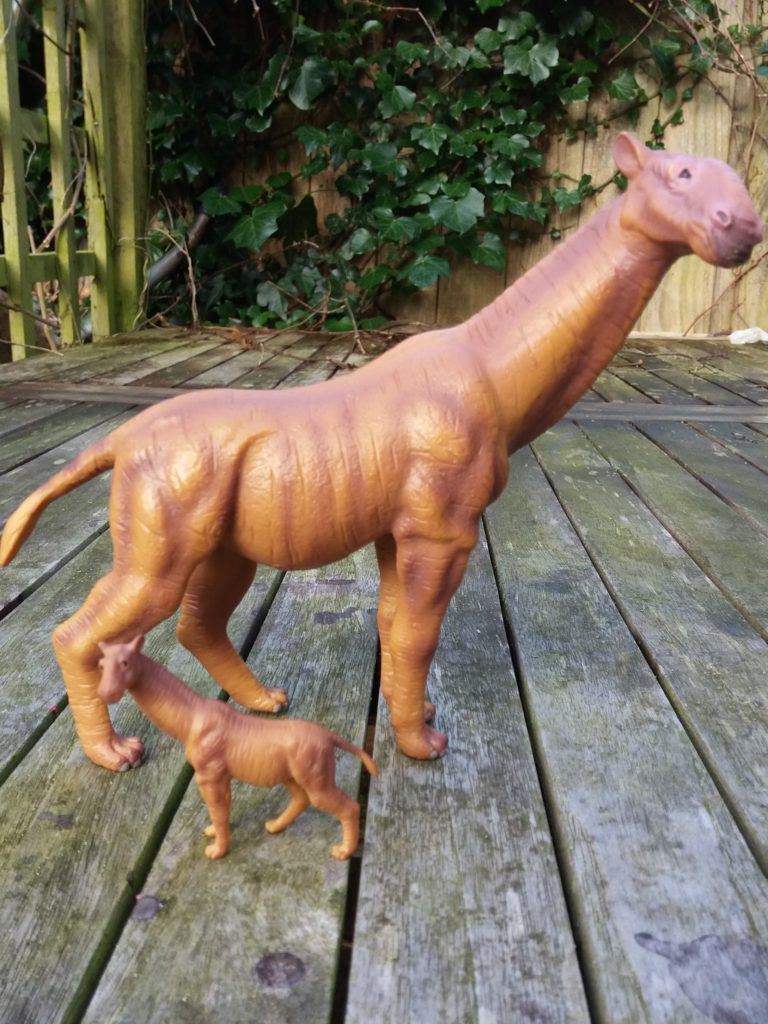
Next, Smilodon! This suffers from being small again, as it reduces a lot of the details the original model has (wow, that is getting monotonous!) and looks a little cheap compared to the others. It’s 1.9” long and 1.1” high, so smaller than the others.
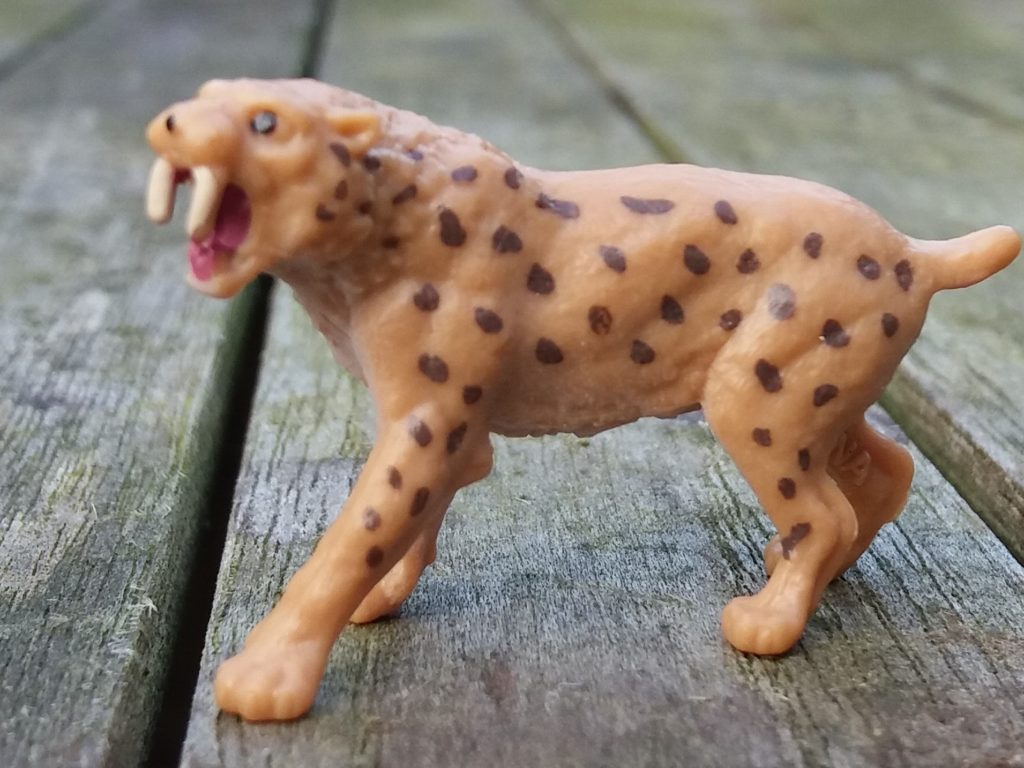
Next, Unitatherium, looking as intimidating as ever! It also seems to retain a lot of the details from the main figure, looking very nice compared to some of the other models in this set. It is decently bulky too, at 2.4” long and 1.2” high.
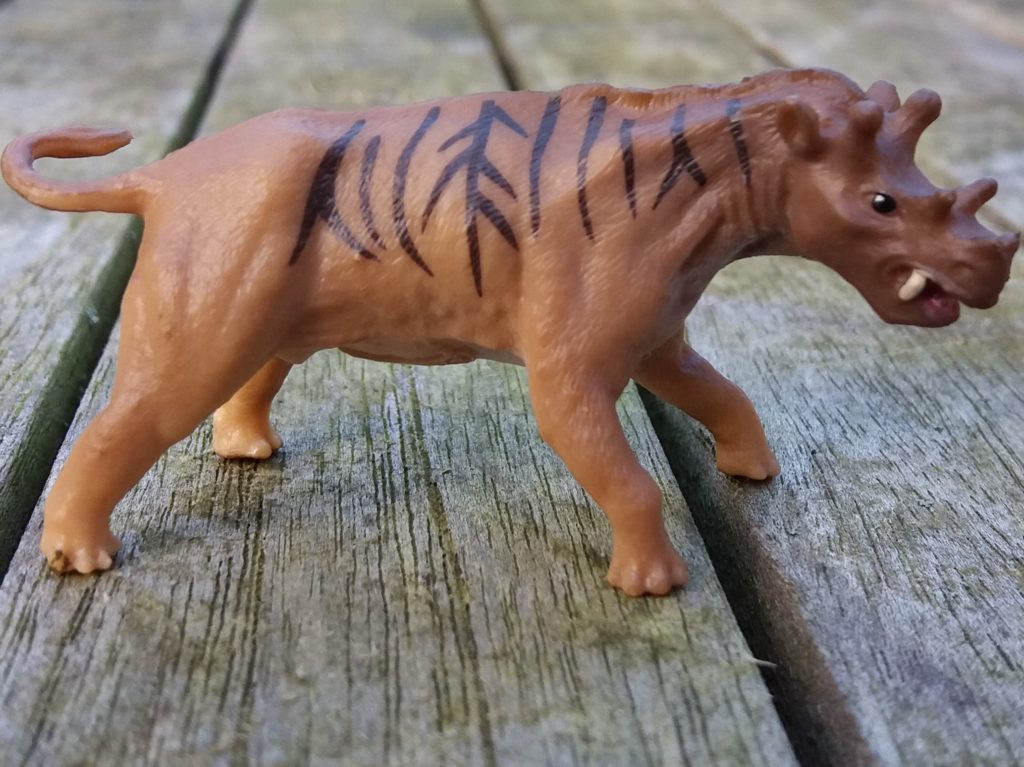
Now we go to the odd balls. While Kelenken is from the Cenozoic, it is a bird rather than a mammal, so seems odd to be in this set. This figure really suffers, not only in detail and quality, but with standing. The big figure can be hard to stand; this figure is impossible to stand! This may vary from figure to figure, but mine is appalling in general! This figure is 2” long and 1.5” high, which doesn’t help its skinny frame.

Finally, we have the oddest choice: Estemmenosuchus. This is a mammal-like reptile (to use out of date terminology), which is the only connection to the rest, as it’s a reptile from the Permian period! While I love the look of this figure, it would have been nice for all the models to have been prehistoric mammals, perhaps having Basilosaurus and Gomphotherium instead. Still, this one has been miniaturized the best of all, so take what you can. Once more, it is suitably small at 2.2” long and 1.5” high.
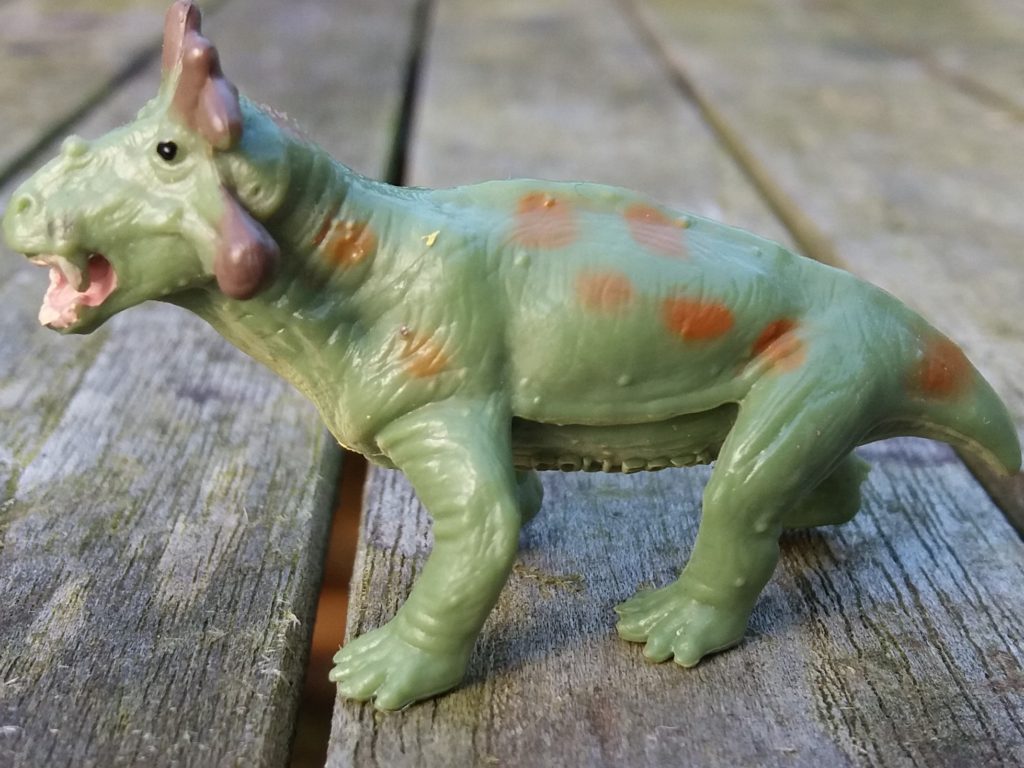
This tube, despite a few simpler textures due to being smaller, is a really nice set ultimately. For those looking to gain these versions of Collecta ancient mammals (and bird and reptile), it is definitely worth picking up, as it is an inexpensive set and will give you more room on shelves for more mini animals. If you want it, absolutely get it.
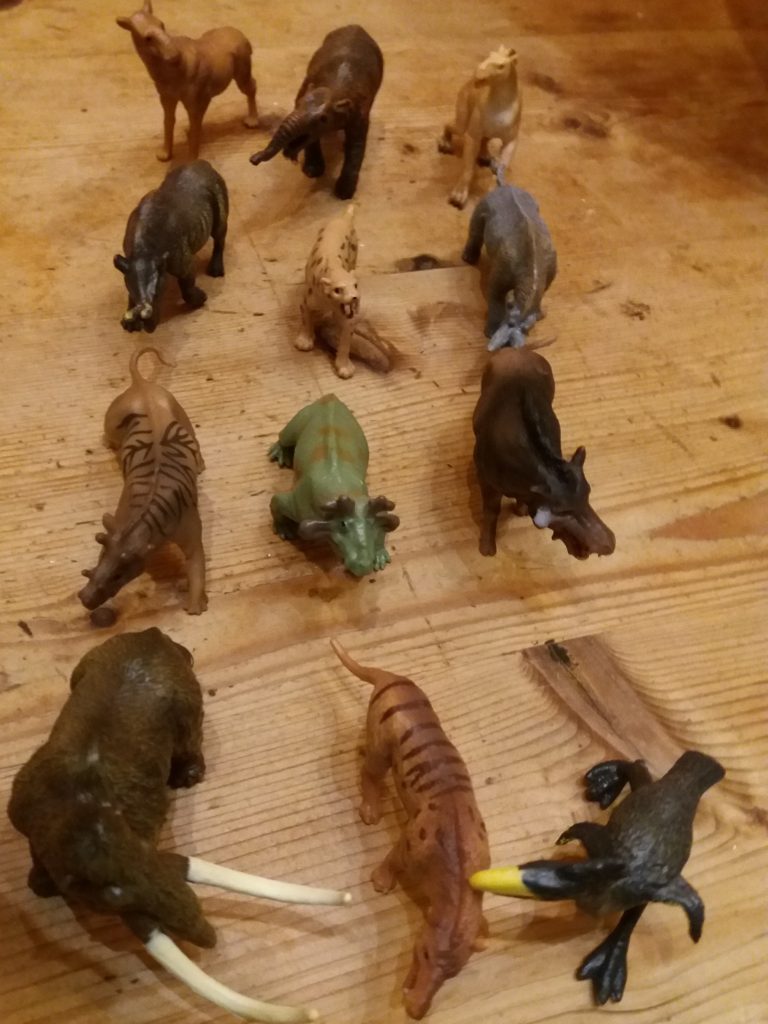
Disclaimer: links to Ebay and Amazon on the DinoToyBlog are affiliate links, so we make a small commission if you use them. Thanks for supporting us!




This review seems too critical. The detail of these mini figures is impressive! This is also not a “prehistoric mammal” set, CollectA calls it a mini prehistoric animal set. Including Kelenken was a great choice, it’s the only reason I bought this tube. Including Estemmenosuchus is strange, but really no stranger than including Dimetrodon in “dinosaur” sets. I guess CollectA chose to include Estemmenosuchus as the larger version of it is popular. Oh, and I find the mini Arsinoitherium in this set hideous.
Estemmenosuchus is not a reptile, it’s a synapsid.
I think Collecta are a UK company, but outsource production of it’s models to China, but with the design and model choices conducted in the UK. For the prehistoric models, this is under the direction of the veteran dino collector Anthony Beeson. This is a similar model to Safari and other companies where the actual models are made in China. Very interesting tube in any case, which I’ll keep a beady eye on!
It’s true that Beeson helps advise on the prehistorics, and the sculptor is German, but the company started in Hong Kong and is still mostly based there. Oddly, they seem to try to cultivate the impression that they’re a UK company. Maybe they think European and American collectors would be less interested in their products if they knew they were Chinese, but I should think that the popularity of PNSO, Vitae, etc. ought to put that fear to rest.
Wasn’t aware this set was even available to buy yet?
How come CollectA is the only company that doesn’t release figures in their own country first?
They’re a Chinese company. I think they are available in Australia first because that’s the easiest Anglophone company to reach by boat.
Anglophone *country, excuse me.
Colour me surprised, though it’s my own fault that. I saw something about them working with people in the UK (and the whole Isle of White thing) as them having a base here as well (though factory in China only). Would it not still appear in China first though, I’ve only noticed Australia (apart from that Isle of White blip)? Never mind me, I’m rambling anyway. Still eagerly awaiting all the same.
Collecta’s miniature keleken does not stand on its base. On the other hand these figures are cheap miniatures and most importantly they have a practical nature since they occupy little space. They are decent miniatures of the prehistoric animal figures of the Cenozoic (mostly prehistoric mammals except kelenken) and de. Paleozoic (estemmenosuchus). Superb review
hola me gusto la Review, aunque las críticas son necesarias porque si es evidente la diferencia de texturas y detalles por el tamaño del modelo y aún así es la colección en miniatura de mamíferos prehistóricos más conocida y barata por así decirlo, lastima no haya más animales, lo bueno es que no hay otras que saquen del Cenozoico de forma masiva (fabricación china, ya saben cómo es su producción) lo malo, le falta variedad, aún así es una buena reseña, base para hacer mis propios modelos y hacerles la competencia jajaja saludos.
I’m fine with including the Kelenken (although clearly, it should have been sculpted on a base), but the Estemmenosuchus is a puzzlement. Why didn’t they just go with the Gomphotherium for this one instead and save the Estemmenosuchus for a future Paleozoic tube?
Yes, why would the manufacturers put Estemmenosuchus rather than Gomphotherium? That just puzzled me. This I’m sure is a pass for me, but my mind could change upon it.
A paleozoic tube will be a dream come true. It could include lisowicia, smok, dimetrodon, estemmenosuchus, edaphosaurus, placerias and animals that are not produced yet like cotlorynchus, inostrancevia and more. It would also be nice if they make a second prehistoric animal tube featuring diprotodon, daedicorus, basilosaurus, gomphotherium, elasmotherium, the new paraceratherium and more